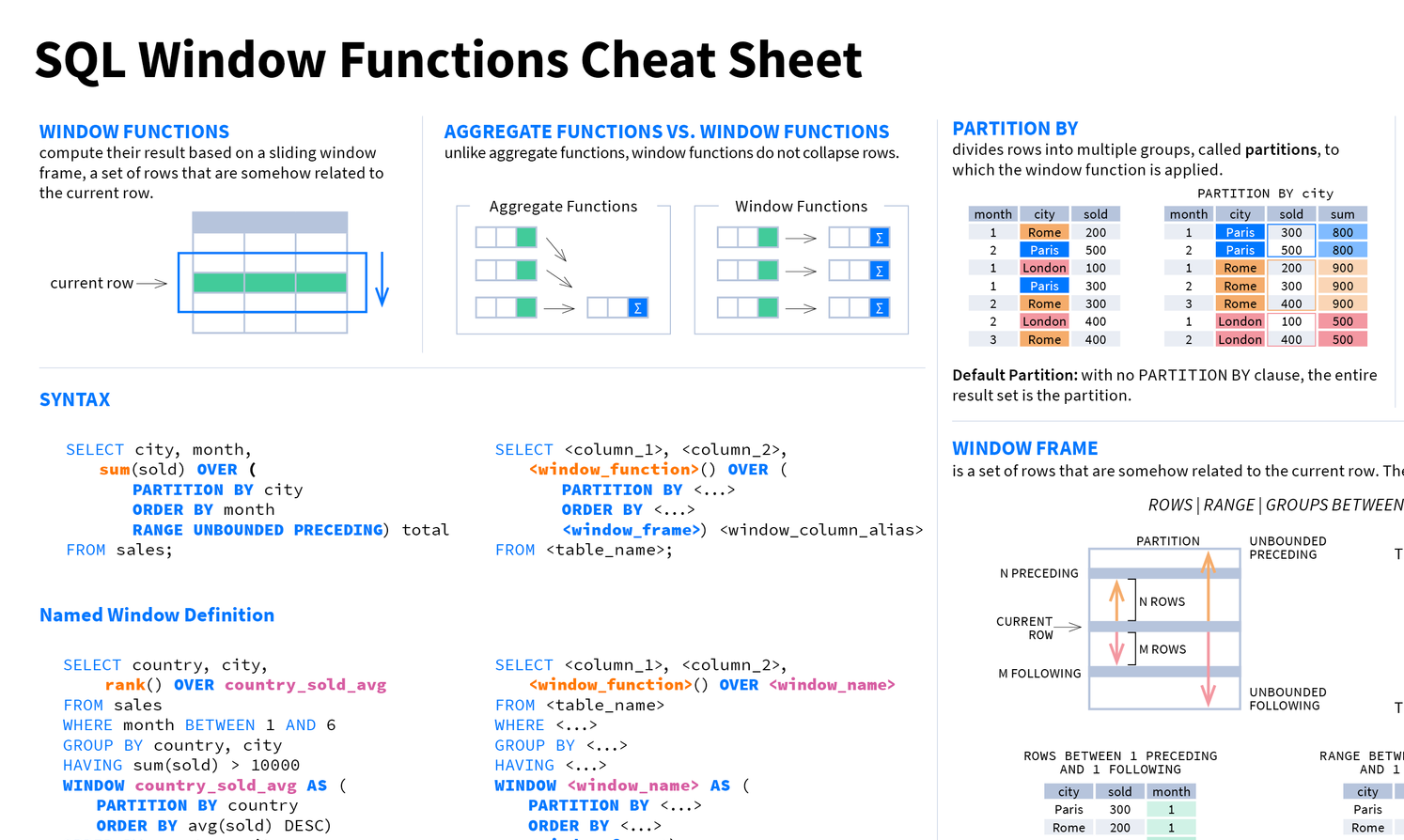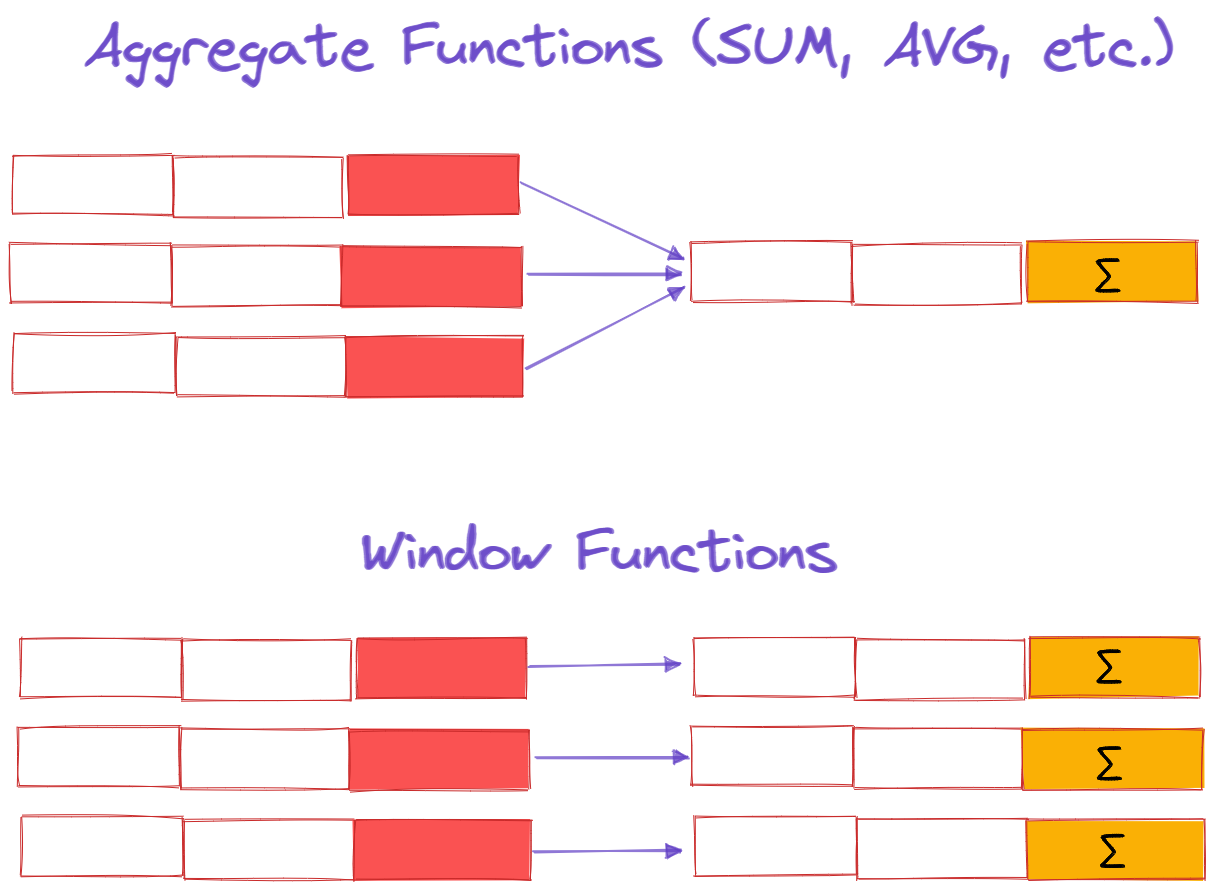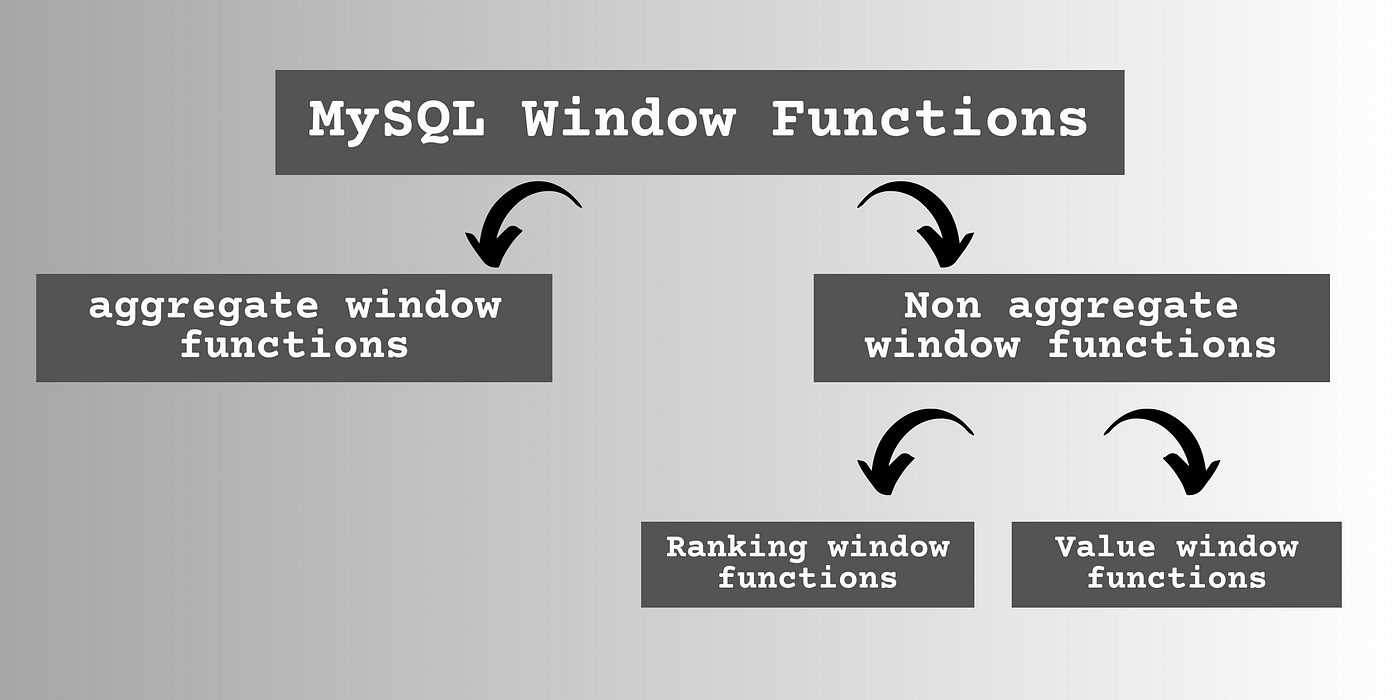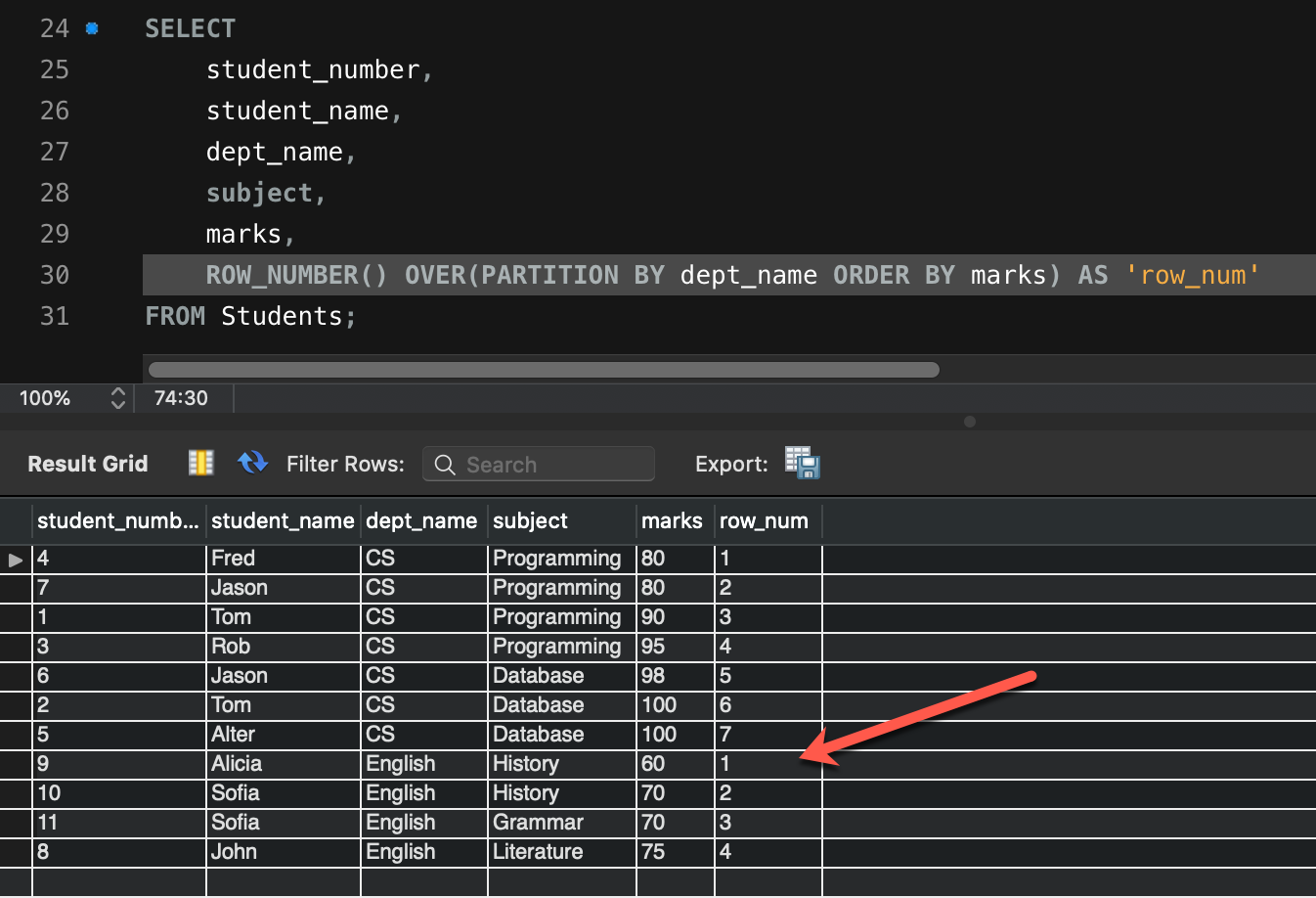Antwort What is the difference between CTE and window functions in SQL? Weitere Antworten – What is the difference between CTE and window functions
They are used to split queries into more readable chunks and you can write new queries against a CTE that has been defined. Window functions, on the other hand, perform aggregation on groups of rows and return the results for each row in the original table.CTEs are temporary result sets used within the scope of a single query and are often employed for complex or recursive queries. Views, on the other hand, are permanent objects in the database used to simplify and abstract complex queries for better maintainability and reusability.CTEs, like database views and derived tables, enable users to more easily write and maintain complex queries via increased readability and simplification. This reduction in complexity is achieved by deconstructing ordinarily complex queries into simple blocks to be used, and reused if necessary, in rewriting the query.
What is the use of window functions in SQL : SQL window functions are a versatile and powerful tool for data analysis and manipulation. They enable users to perform a wide range of analytical tasks, from ranking and partitioning data to calculating moving averages, cumulative sums, and differences between consecutive rows.
Why use window functions
A window function performs a calculation across a set of table rows that are somehow related to the current row. This is comparable to the type of calculation that can be done with an aggregate function.
How many types of window functions are there in SQL : There are a lot of window functions that exist in SQL but they are primarily categorized into 3 different types: Aggregate window functions. Value window functions. Ranking window functions.
If the data you are working on has a small number of records then you can use CTE, it will work faster and improves the performance of the query. But if you are working with a huge number of records it is always preferred to use Temporary tables.
Stored Procedures are pre-written and pre-compiled SQL statements that are stored in a database and can be executed multiple times with different parameters. Common Table Expressions (CTE), on the other hand, are temporary result sets that are defined within a SQL statement.
Can I use 2 CTE in one query
Querying multiple CTEs in a single query
Only one WITH keyword is allowed. CTEs must be separated with commas. A comma is not needed before the main query.Another advantage of using CTEs is improved performance. Since CTEs are temporary result sets, they are stored in memory, which reduces the number of disk I/O operations required to retrieve the data. In contrast, subqueries may result in repeated scanning of the same table, leading to slower query performance.Another advantage of using CTEs is improved performance. Since CTEs are temporary result sets, they are stored in memory, which reduces the number of disk I/O operations required to retrieve the data. In contrast, subqueries may result in repeated scanning of the same table, leading to slower query performance.
A window function performs a calculation across a set of table rows that are somehow related to the current row. This is comparable to the type of calculation that can be done with an aggregate function.
Why are they called window functions : They are called window functions because they perform a calculation across a “window” of rows. For instance, you might want to calculate a running total of sales, or find out the highest score in a group.
What are the 3 types of functions in SQL Server : In SQL Server, user-defined functions come in three different varieties:
- Scalar: Functions That Return A Single Value.
- Inline Table Valued Functions: These functions return a Table Set with just one TSQL statement.
- Multiple Statements Table Valued Functions: (Returns Table Set; contains many TSQL statements).
Which is faster CTE or temp table
Performance : In general, CTEs are more efficient than temporary tables for small data sets. This is because CTEs are held in memory and do not require disk access. However, for larger data sets, temporary tables may be more efficient, as they can be indexed and optimized for specific queries.
Purpose: Stored procedures are used to encapsulate a sequence of SQL statements into a reusable, executable unit, while CTEs are used to define a temporary result set that can be referenced within a single SQL statement.If the query is simple and does not require the use of complex logic, then a CTE may be the best option. However, if the query is complex or requires the use of large amounts of data, then a TempTable may be the better choice.
How many times can we use CTE in SQL Server : CTEs can reference the results multiple times throughout the query. By storing the results of the subquery, you can reuse them throughout a larger query. CTEs can help you perform multi-level aggregations. Use CTEs to store the results of aggregations, which you can then summarize in the main query.








